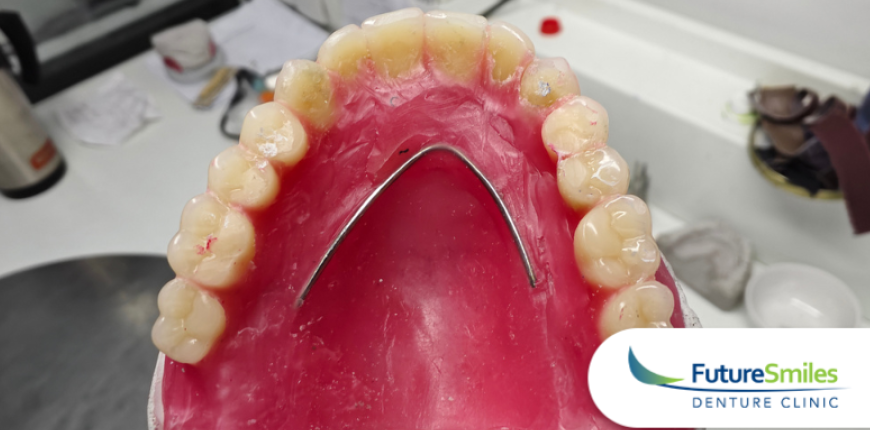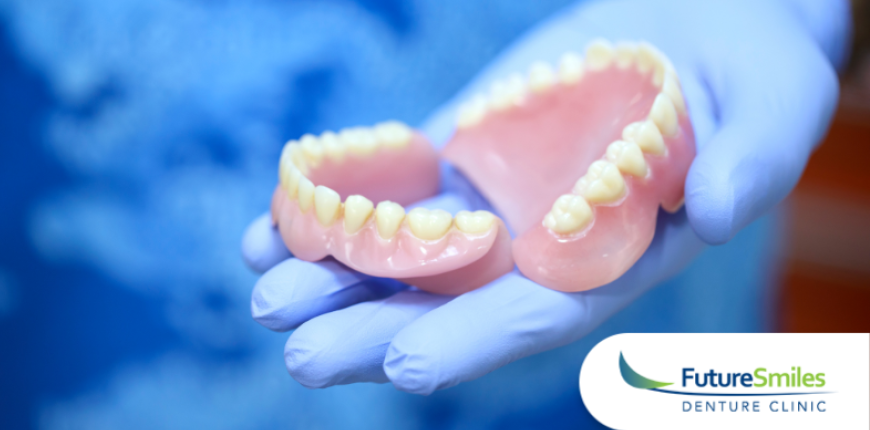A successful bone graft allows your jaw bone to be strong enough to support your dental implant. Here’s what to expect from the surgical procedure.
An implant-supported denture is an innovative tooth replacement option that is supported by and attached to dental implants, rather than resting on the gums. It has many benefits over traditional full/complete dentures, including:
- More natural look, feel, and function
- Makes speaking and eating more comfortable
- Doesn't require denture adhesives and will never shift or move
- Preserves your jaw strength
- Improves your oral health
Affordable Denture Implants at Future Smiles
At Future Smiles, we never want you to compromise your comfort, happiness and oral health. That’s we we offer affordable and high-quality denture implants to meet all budgets and lifestyles.
Worried about the cost of dental implants? We make every step of your tooth replacement journey easy with our flexible payment options.
Want to know how we can help you?
Why Do I Need a Bone Graft For a Dental Implant?
If you are considering implant-supported dentures, you should keep in mind that it’s fairly common to be told during a consultation that a bone grafting surgery might be necessary.
Bone grafting is a technique that is needed when a patient doesn’t have enough healthy, natural bone in the mouth that are capable of supporting the dental implants. This deficiency can be caused by:
- Gum disease
- Face injury or trauma
- Empty spaces after teeth have been removed
- Development defects
What to Expect During a Bone Grafting Procedure
A bone graft procedure is designed to replace missing bone in the jaw and builds a solid foundation for your new dental implants. Although it may sound serious, this treatment is quick, minimally invasive, and typically performed on an outpatient basis.
What does the process involve?
Traditionally, a bone graft involves removing a piece of bone from another part of the patient’s jaw or body and transplanting it into the jawbone. However, more advanced options today include taking the bone from a cadaver or animal source.
Here is what you might expect from a bone graft:
- You will receive anesthesia to ensure you won’t feel any pain or discomfort during the procedure.
- Your vital signs, such as heart rate and blood pressure, are carefully monitored.
- After cleaning the treatment area, your denturist will cut through the skin and muscle surrounding the bone that will receive the graft.
- In some cases, your surgeon may need to make a different cut to harvest a bone graft. This could be taken from your hip bone, leg bone, or ribs.
- The bone graft will be inserted between the two pieces of bone that need to grow together. In some cases, this graft might need to be secured with special screws.
- The layers of skin and muscle around the treated bone will be closed surgically and, if necessary, around where your bone was harvested.
Healing Time
After the bone is transplanted, it will take a few months for it to grow enough new bone to support the placement of a dental implant. How long it takes will depend on several factors, including:
- The health of the patient
- The location of the bone graft
- The density of the bone
Dental Implants after a Bone Graft
Once your jawbone has healed, the dental implant procedure can move forward. This is also done in several stages:
Step One:
Placement of the titanium dental implant post into the jaw bone.
Step Two:
Once this has healed (after several months), your denturist will place the abutment into the jaw.
Step Three:
Time must be allowed for the soft tissue to heal. After this, molds of the teeth and jawbone are taken, and the procedure of inserting the denture can take place.
Bone Grafting Recovery Period
In order to recover quickly from your bone grafting procedure, it’s important to follow your surgeon’s post-op instructions. Some of the things you can expect include:
- Pain, but this can be relieved using prescribed pain medication.
- Swelling of the treatment area. Use an ice pack to relieve any discomfort.
- Avoid any unnecessary activity. To promote healing, it’s important to rest and keep the treatment site as immobile as possible for the first 1-2 days.
- Stop smoking as any tobacco use will interfere with the healing process.
- Some fluid draining from your incision. This is normal but let your health care provider know immediately if it’s severe.
REMEMBER: Make sure to keep all of your follow-up appointments. Your surgeon may also want to perform a series of X-rays to see how well the bone is healing. It’s important to follow ALL of your health-care provider’s instructions to have the best chance at full recovery.
Call Today
To find out whether or not implant-supported dentures are the right option for you, or to ask about your other tooth replacement choices, contact our local Calgary denture clinic at (403) 475-0016 or fill in our online contact form.






